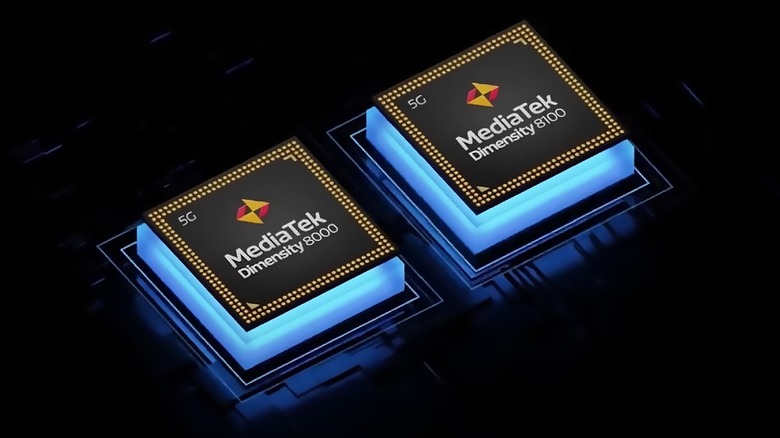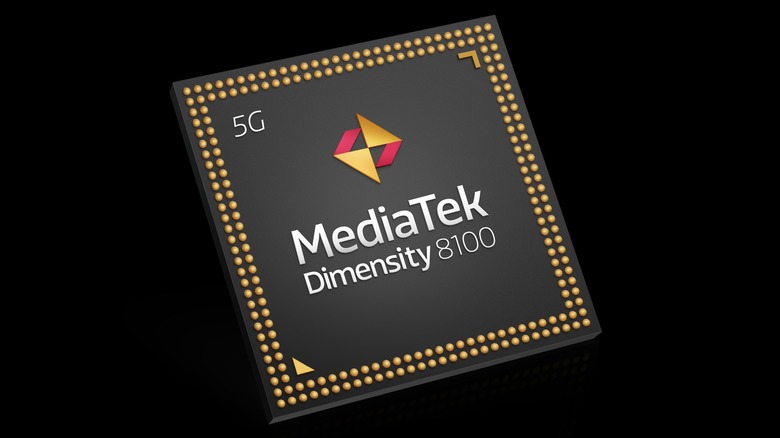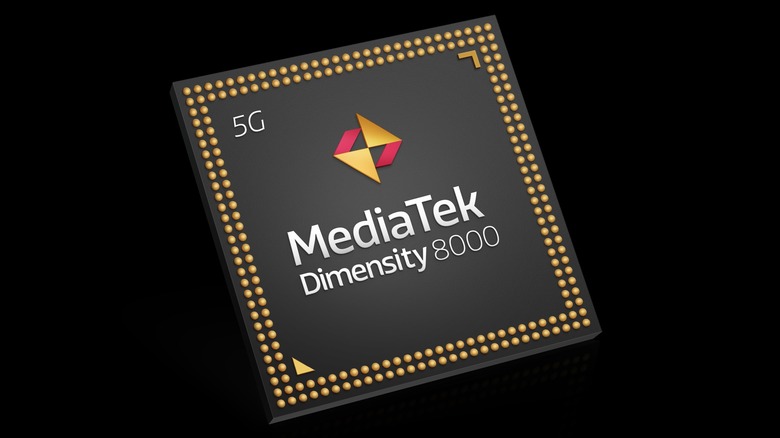Everything You Need To Know About The MediaTek Dimensity 8000 Series
Taiwanese chipmaker MediaTek today announced the launch of two new 5G smartphone chipsets aimed at the lucrative affordable flagship segment. Called the Dimensity 8000 and the Dimensity 8100, these new chips also mark the debut of the company's Dimensity 8000 series. As amply evident from the naming scheme, these system-on-chips (SoCs) happen to be positioned right below MediaTek's 2022 flagship processor, the Dimensity 9000, targeting the upper end of the mid-range smartphone market this year.
The Dimensity 8000 series previously appeared in a string of leaks — most of which indicated that it is a feisty competitor to the Qualcomm Snapdragon 888. In fact, early benchmarks revealed the Dimensity 8100 SoC might even hold a slight edge over the likes of the Snapdragon 870 and 888 in terms of performance. This should not come as a surprise, given that the chips share a lot of underpinnings with the Dimensity 9000 series.
Dimensity 8100 vs. 8000: Key differences
The new Dimensity 8000 series chipsets have a lot of common features between them — best exemplified, perhaps, by the fact that both devices use the same ARM Cortex-A78 performance cores and the Cortex-A55 efficiency cores. The differences lie in the clock speeds.
Given that the Dimensity 8100 is positioned slightly above the Dimensity 8000, it has a small performance advantage mainly brought about by the higher performance cores' clock speeds of up to 2.85GHz versus the 8000 SoC's max 2.75GHz. This is also the case with the Dimensity 8100's GPU and NPU, both of which operate at higher clock speeds than the corresponding ones on the Dimensity 8000.
The Dimensity 8100 also supports a higher screen resolution and refresh rate combo, topping out at WQHD/120Hz. This is in contrast to the Dimensity 8000, which only supports up to FHD+ resolution — albeit at a higher 168Hz refresh rate. The rest of the hardware remains largely identical between the two.
Hardware specs detailed
Features common to both the chips include the Arm Mali-G610 GPU, support for UFS 3.1 storage, and LPDDR5 RAM. In addition, MediaTek's Imagiq 780 DSP supports the capture of 200MP images and features like AI-based noise reduction and HDR. Both chipsets also support 4K60 and HDR10 video capture, along with 2x lossless zoom. Oh, and there is triple-camera support thrown in, too.
In terms of connectivity, the Dimensity 8000 series seem well-equipped thanks to its support for 5G networks — including sub-6GHz 5G. It does miss out on mmWave, though, which might make its North American prospects look bleak. That, however, should matter little to emerging markets like India and South Asia, where 5G is yet to make inroads and LTE still rules the roost.
In case you're wondering, yes, both chipsets do support Wi-Fi 6E as well as Bluetooth 5.3. In addition, the chips are pretty loaded in terms of geo-positioning hardware and offer support for GPS, BeiDou, Glonass, and NavIC.
MediaTek has indicated the first smartphones based on the Dimensity 8000 series should hit shelves before the end of Q1 2022. The first model to feature the Dimensity 8100 chip may be the Realme GT Neo 3, with a smartphone from the Redmi K50 lineup likely to join the fray later.


